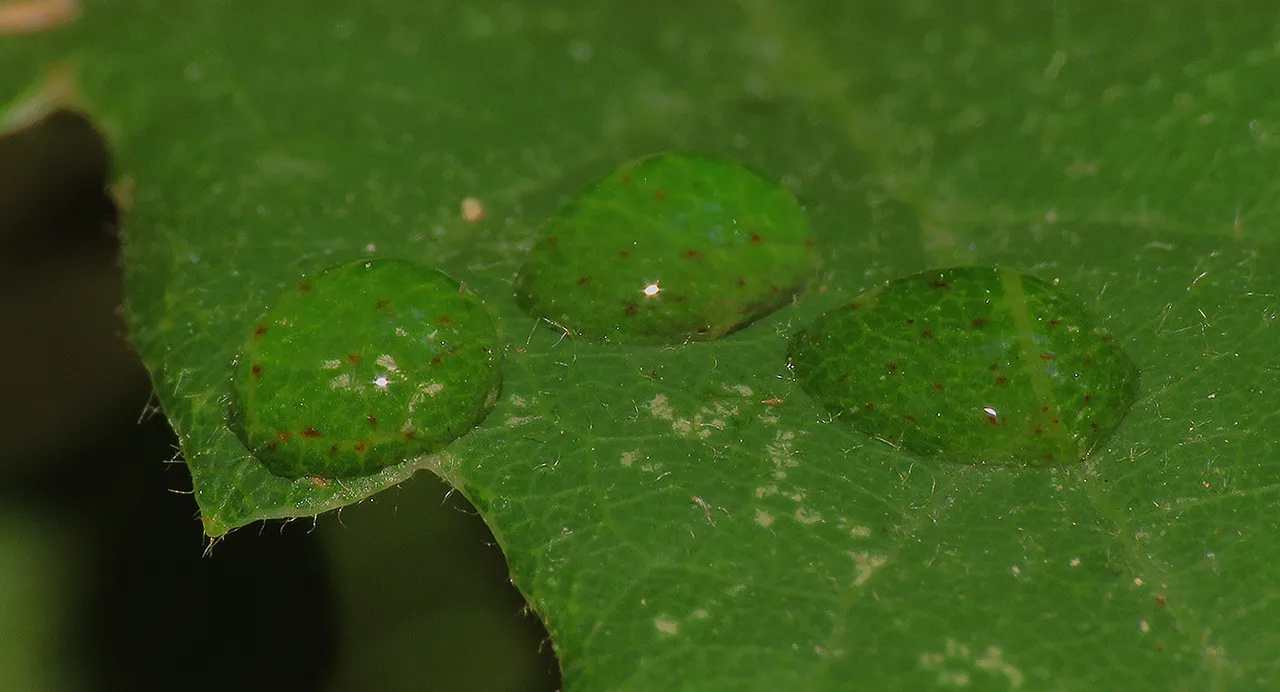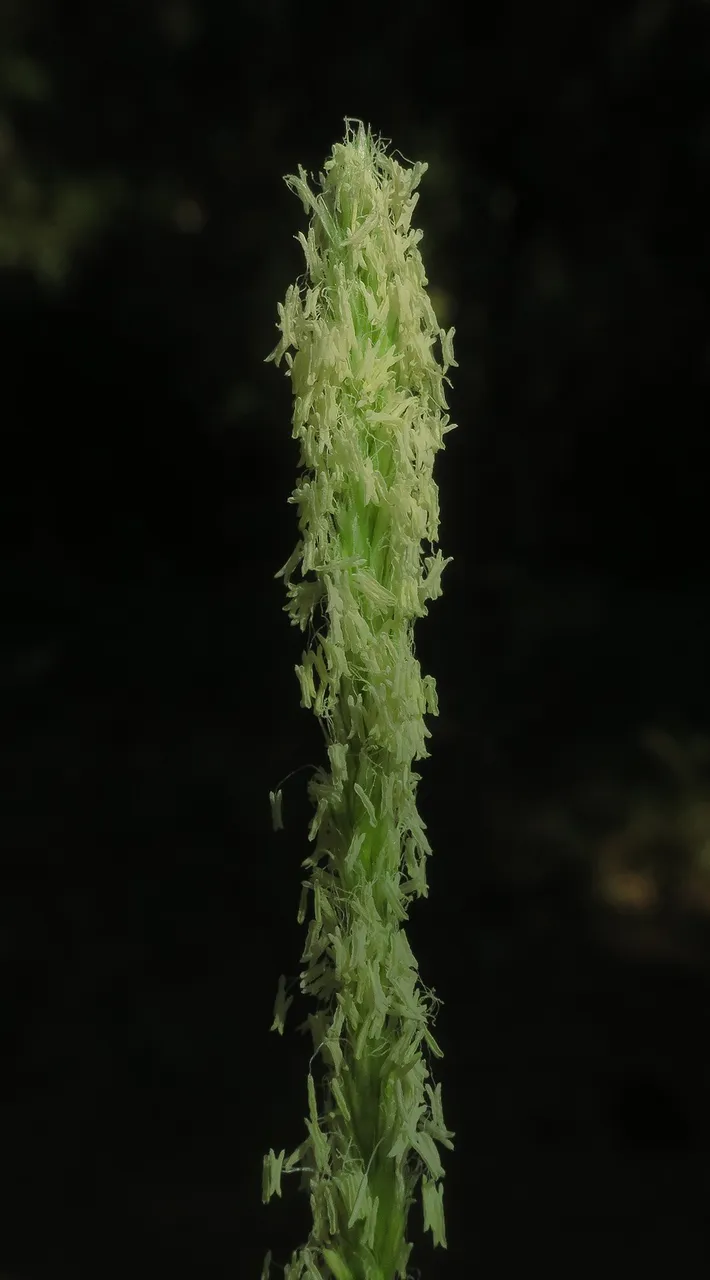Busoler is a forest park just outside the city of Pula. Very often, when I have something to do or buy in the city, I visit Busoler before returning home.
In today's post, I'll show you some plants and insects that caught my attention in an hour or so I spent rambling around the forest park early this morning after buying some stuff in the shopping mall less than a kilometer from there.
You'll see a bit of scenery too. Have a good viewing.
The pines in Busoloer are old and tall. I took this photograph while following one of the many narrow paths paved with needles fallen from those beautiful trees planted in the first decade of the 20th century.
Under the pines, you can find various Mediterranean shrubs and small, shrub-like oaks that never reach their full potential in the shade of tall conifers.
In the even deeper shade under one of the many Quercus pubescens oaks, I found an interesting spider. This is the Cyclosa conica, a spider from the large and varied Araneidae family. The function of the small fragments deployed in a neat vertical row on the web isn't completely clear to experts. Some think they are there as some kind of camouflage, to divert the attention from the spider, others think that these fragments can attract the prey. And then there is a third group that thinks that having those things in its web benefits the spider in more than just one way. That's what I learned today on the Internet.

Less than a meter from the spider, just across the narrow path, I photographed a fly that was resting on some small shrub. The name of the species is Anthomyia procellaris, it belongs to the Anthomyiidae family.
When it comes to the old pines, the name of the species is Pinus brutia.
At one point, I noticed the fairly big pearls on the oak leaves. Aside from those droplets, the surface of the leaf shown in this photograph was dry and dusty. It hasn't rained for weeks and I don't remember when I saw the dew in the morning last time. Furthermore, I haven't seen any sign of humidity besides those nicely shaped beads that looked like something made of water.
It took me some time to realize that this wasn't water but resin fallen from the pines.
You can't create a shape shown in this photograph with liquid water.

I used a needle - I mean, the thin, needle-like leaf of the pine ...

... to change the elegant shapes of two of those viscous droplets.

The resin gives a nice aroma to the entire forest, its scent is usually subtle and quite elusive, it appears and disappears while you rambling around in the shade of the pines. But when you disturb a droplet of resin, it releases a sudden outburst of beautiful, refreshing fragrance that gives a bit of relief on a hot summer day like the one I'm talking about here.

I never spent so much time with the resin ...

... and I never dedicated so much space in a post to it.

Some droplets looked pretty good under the light provided by the flash of my camera while others - the trio shown in this shot, for example - were barely visible when photographed that way.

Here I used a longer exposure and the ambient light only, to get a better picture.
This older, more solid droplet ...

... was attached to a small piece of bark that was lying in the middle of the path.
This wide shot was taken when I left the resin to continue my morning journey through the suburban forest park.

Here you can see an insect I photographed on the large, broad leaf ...

... of the Tilia platyphyllos tree.

This is a nymph, a young, wingless version ...
... of the Nagusta goedelii, a predatory bug from the Reduviidae family.

In this shot, the insect was photographed in ambient light, no flash was used here. When it comes to the bug's mimetic external anatomy, the most interesting part to me is the antennae that resemble a pair of long, thin grabbing forelegs. I never encountered this species before.
The Tilia platyphyllos tree has grown by the side of the relatively large unpaved road that passes through the center of the forest park.
On another leaf of the same small tree, I found a different kind of bug.

This vegetarian green shield bug (Palomena prasina) belongs to the Pentatomidae family.

This is the larva of the Harmonia axyridis lady beetle, the third and last species photographed on the Tilia platyphyllos tree. In the following photograph ...

... I zoomed in on the herbaceous vegetation that grows on the sunny edge of the forest. The colorful leaf in the center of the shot belongs to the Lactuca serriola plant.
In this shot, I zoomed in on the lower branches of the Ulmus laevis tree. Most of the foliage was green, but here the focus is on a small group of lovely yellow leaves.

I found some interesting protuberances on some of the green leaves of that tree.

These are made by Tetraneura nigriabdominalis aphids ...
... a species that forms galls on various types of elm.

A bit further, not far from the elm, I photographed the fruits of the cherry plum tree (Prunus cerasifera).
On one of the leaves of that tree, I photographed this very small nymph of the Phaneroptera nana bushcricket.
Some of the ripe, edible fruits ...
... ended up on the ground by the side of the road.

On the edge of the forest, the small trees are mixed with thorny, annoying blackberry shrubs that don't allow an easy, painless passage through the walls of vegetation between the narrow paths. In the above photograph, you can see an elegant arch formed by a bent branch of one of those shrubs.

Here you can see the leaves of the Crataegus germanica tree.
After some more rambling under the pines ...

... I passed by this pine cone that was lying in the middle of the path, and then ...
... I stopped to photograph the grass in bloom.
One tiny, modest flower of the Sesleria autumnalis grass doesn't look like a highly decorative piece of vegetation ...
... but when you see many of these flowers covering the entire ear of grass, the scene can leave an impression of baroque exuberance.
This type of grass is pretty rare here in my area ...
... and I don't remember ever seeing it covered with flowers ...
... so I was ready to take plenty of photographs when I got the chance.
AND THAT'S IT. HOPE YOU ENJOYED THE JOURNEY AS MUCH AS I ENJOYED MY TODAY'S WEEKEND EXPERIENCE EARLY IN THE MORNING ON THE OUTSKIRTS OF THE CITY, JUST BEHIND THE LAST LINE OF SUBURBAN HOMES ALONG THE ROAD THAT LEADS FROM PULA BACK TO MY HOMETOWN.
The following links will take you to the sites with more information about the protagonists of this post. I found some stuff about them there.
https://en.wikipedia.org/wiki/Cyclosa_conica
https://en.wikipedia.org/wiki/Anthomyia_procellaris
https://en.wikipedia.org/wiki/Pinus_brutia
https://en.wikipedia.org/wiki/Quercus_pubescens
https://en.wikipedia.org/wiki/Tilia_platyphyllos
https://en.wikipedia.org/wiki/Nagusta_goedelii
https://en.wikipedia.org/wiki/Green_shield_bug
https://en.wikipedia.org/wiki/Harmonia_axyridis
https://en.wikipedia.org/wiki/Lactuca_serriola
https://en.wikipedia.org/wiki/Ulmus_laevis
https://en.wikipedia.org/wiki/Prunus_cerasifera
https://en.wikipedia.org/wiki/Phaneroptera_nana
https://en.wikipedia.org/wiki/Mespilus_germanica
https://en.wikipedia.org/wiki/Sesleria_autumnalis
AS ALWAYS HERE ON HIVE, THE PHOTOGRAPHS ARE MY WORK


























